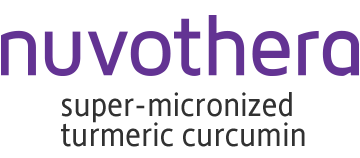Psoriatic Arthritis Symptoms and Signs
17 Jan 19

Psoriasis is the most common immune-mediated disorder in the United States, and it is much more than a cosmetic problem. Psoriasis can have a significant negative impact on a person’s quality of life, and up to 30 percent of people with psoriasis will develop psoriatic arthritis. While psoriatic arthritis presents many of the same symptoms as other forms of arthritis, it is a unique disorder in and of itself. Though there are many treatment options available for psoriasis, psoriatic arthritis is a bit more complicated and has more complicated symptoms. Let’s take a look at the most common signs and symptoms of psoriatic arthritis.
Signs and Symptoms of Psoriatic Arthritis
Most people will develop psoriasis before they are diagnosed with psoriatic arthritis. The symptoms of psoriasis are mainly characterized by dry, scaly, red skin lesions that can be itchy or painful. These lesions usually appear on the knees, elbows, and scalp, but they can cover just about any part of your skin. The severity of these lesions can also vary from person to person. Most forms of psoriasis and psoriatic arthritis go through cycles where symptoms will flare up for a few weeks or months before subsiding or going into remission.
From there, psoriasis can potentially develop into psoriatic arthritis. Furthermore, the severity of your psoriasis has no connection to the severity of your psoriatic arthritis. Your psoriatic arthritis symptoms may also differ from someone else who has psoriatic arthritis. The most common signs and symptoms of psoriatic arthritis include:
Pain and Swelling in the Joints
Psoriatic arthritis is characterized by painful, swollen joints. While it can affect just about any joint or tendon in the body, psoriatic arthritis is most likely to affect your fingers, toes, ankles, knees, and lower back. Pain and swelling can be symmetric, meaning it affects joints on both sides of the body at the same time, or asymmetric, meaning it only affects one side. Psoriatic arthritis is often considered mild or oligoarticular when it affects four or fewer joints. More severe psoriatic arthritis that affects more than four joints is referred to as polyarticular.
Stiff Joints
Stiffness is also common, particularly upon waking up in the morning or after periods of rest or inactivity.
Pain in Tendons and Ligaments
Psoriatic arthritis can potentially result in enthesitis, which refers to inflammation in the areas where tendons and ligaments attach to bones. This occurs most commonly at the bottom of the feet (plantar fasciitis) and at the Achilles (Achilles tendinitis).
Dactylitis
Dactylitis, also known as “sausage digits,” is a type of inflammation of the toes or fingers. Inflammation is so severe that it may result in a sausage-like swelling of your toe or fingers.
General Fatigue
Psoriatic arthritis can result in general fatigue and tiredness, a natural response to the inflammation occurring throughout your body.
Reduced Range of Motion
Tenderness and inflammation in the joints, particularly in the spine, can make even the slightest movements painful, reducing your general range of motion.
Eye Problems
Inflammation from psoriatic arthritis can potentially spread to the eyes. This can result in redness, irritation, and disturbed vision.
Nail Changes
Your nails may look pitted, infected, or affected by a fungus. They may become deformed or even separate from the nail bed entirely.
Psoriatic Arthritis vs. Rheumatoid Arthritis
Many of the signs and symptoms of psoriatic arthritis closely resemble rheumatoid arthritis, particularly pain, swelling, and tenderness in the joints. Some symptoms unique to psoriatic arthritis include:
- Swollen fingers and toes – Although rheumatoid arthritis can potentially cause swelling, it is often relegated to a single joint. With psoriatic arthritis, swelling occurs along the entire length of your finger or toe.
- Lower back pain – Psoriatic arthritis is more likely to cause spondylitis or inflammation of the spinal column. Spondylitis often results in stiffness in the neck, lower back, and sacroiliac joints (the joints between your pelvis and spine), making any joint movement in these areas painful.
- Tendon and ligament pain – Psoriatic arthritis is also more likely to cause enthesitis, particularly in foot tendons and ligaments.
Diagnosing Psoriatic Arthritis
There is no definitive test for psoriatic arthritis, which is why identifying the signs and symptoms of psoriatic arthritis is so important. Your doctor will perform a physical exam, consider your medical history, and perform blood tests, MRIs, and X-rays to rule out other potential diagnoses.
Psoriatic arthritis has a significant impact on your health and wellbeing, but it doesn’t need to be an obstacle in your life. Treatments to reduce pain and manage symptoms exist, and small changes to your lifestyle, including regular exercise and strategies to relieve stress, can go a long way to helping you live your life to its fullest. If you think you might have psoriatic arthritis, consult your doctor today.
Sources:
- https://www.psoriasis.org/about-psoriasis
- https://www.mayoclinic.org/diseases-conditions/psoriasis/symptoms-causes/syc-20355840
- https://www.arthritis.org/about-arthritis/types/psoriatic-arthritis/symptoms.php
- https://www.mayoclinic.org/diseases-conditions/psoriatic-arthritis/symptoms-causes/syc-20354076
- https://www.psoriasis.org/about-psoriatic-arthritis

